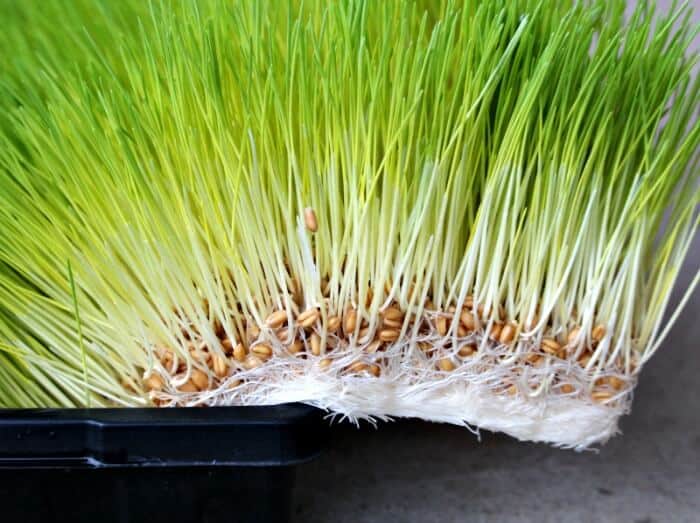
I’ve recently become enamored with the concept of growing fodder for animals. Not only is it simple enough for even the smallest-scale homesteader to accomplish, but it’s also incredibly cost-effective.
If you’re needing an economical, highly nutritious way to feed your homestead critters, a small-scale fodder system may be just what you’re looking for. I’m thrilled to have my homesteading neighbor, Jana from Celtic Prairie Farm sharing her fodder system knowledge with us today!
What Exactly is Fodder?
Fodder is simply any food grown for livestock. In this case, the word fodder is referring to sprouted seeds that are fed to livestock. So when we needed a way to supplement our animals’ nutrition during the long Wyoming winter, growing our own fodder became the obvious solution, particularly when the hay we purchase may not be the best quality.
Pros and Cons of a Fodder System
Just like everything else you have considered adding to your homestead, a fodder system has its pros and cons. You should look into both to figure out if a fodder system is right for your situation.
Pros of Having a Fodder System
- Fodder is nearly completely digestible, so your feed budget benefits the animal instead of going straight through the ground!
- When the grain is sprouted, and grown hydroponically, nearly all the starch in the grain is converted to sugar and is better utilized by the animal’s rumen.
- The best part is that the whole process, from sprout to ready-to-feed-fodder only takes 6-8 days. Quick!
- The animals eat everything, the sprouts, the seeds, and the roots so nothing is wasted!
- You control part of your animals’ feed source
- Adds extra nutrients to your livestock feed routine
Bonus: Having a fodder system growing in the dining room also takes care of my gardener’s need to be growing something year-round.
Cons of Having a Fodder System
- You still rely on an outside seed source
- This helps supplement your feed but doesn’t replace the main diet
- A fodder system if bought can cost a lot for small operations
- Can be very time-consuming depending on the number of animals you feed
- Need ideal growing conditions, which could mean a greenhouse
There are pros and cons to everything that is added to a homestead, you need to weigh and compare them to your specific situation. This is how we came to the conclusion that we would try and build our own version of a fodder system.
How We Built Our DIY Fodder System
Unless you have a large budget and a lot of animals, there aren’t many affordable fodder systems available for the small family farm. Since we didn’t want to spend a couple of thousand dollars on a fodder system, we started searching the hive-mind of the internet for ways to make our own.
There are several websites and YouTube videos out there that show you how to build your own fodder system, but we eventually settled on a hybrid version. It isn’t perfect and we still do some tweaking every now and then to suit our growing situation and the animal’s needs.
Our Fodder System Setup
Our fodder system is a pretty simple rack that was built with PVC pipe. It was made to fit the standard black heavy-duty 10″x 20″ seedling gardening trays. Each garden tray has 12-16 small holes drilled evenly in the bottom and then placed on the rack.
Note: The standard trays that you normally get are pretty flimsy and won’t hold up to several pounds of fodder without cracking on the corners after only a few uses. Try to find heavy-duty trays, either at your local garden center or online.
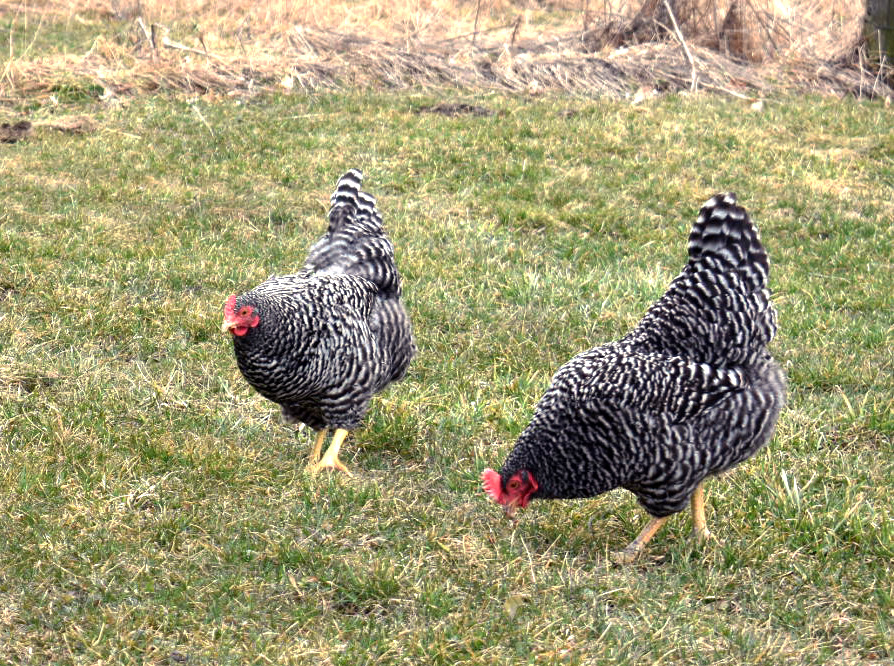
Starting Fodder In Your Fodder System
What Grains Can You Use?
Many different types of grain can be grown for fodder including barley, oats, wheat, and even sunflower seeds. We use wheat since it happens to be readily available for us. One of our neighbors is an organic wheat farmer.
Not everyone will have a neighbor that happens to grow fodder grains that are readily available. You will have to go to local mills, farmers, or online to source the best grains for your fodder system. One great place to look online is True Leaf Market. They are my go-to online gardening super-store, they have everything you need. Seeds cover crops, sprouting grains, and gardening supplies.
Steps We Use to Grow Fodder
Step 1: Soaking Your Fodder
We drilled a bunch of tiny holes into the bottom of a 5-gallon bucket, then put that bucket inside another. That way, when you lift the first bucket at the end of the soaking period, the water drains easily. start soaking the wheat in a bucket for 12-24 hrs.
Note: If you agitate the wheat after it settles and sinks into the water, the chaff will float to the top. Skim that off since it won’t sprout and you don’t want that in your trays.
Step 2: Spread Soaked Grain in Tray
Spread about 5 cups of soaked grain in a tray. I use a 3″ putty knife as a seed spreader rather than my hands, so the natural oils on my skin don’t come in contact with the wheat seed. You can spend a ridiculous amount of time trying to get it all even in the tray, but just do the best you can.
The goal is to get the grain to a depth of about 1/4″-1/2″ in the bottom of the tray. Too much and it won’t all sprout. Too little and you won’t have the yield that you want for your growing time.
Step 3: Watering Your Fodder
Our fodder is watered gently, 4 times per day, enough so that the seeds stay moist, but there isn’t any standing water in the trays. Standing water will cause mold and odors.
Many sources suggest using a small pond pump in the catch basin at the bottom of the rack to recycle the water back up through the plastic tubing to drip through the trays more than once. However, we found that recycling the water caused mold, slimy fodder mats, and a foul odor.
Instead, we are currently using a 5-gallon bucket filled with clean water for the pump to deliver water to the top of the rack and drip throughout the trays, down to the basin at the bottom. About once per week, we pump out the used water into the lilac bushes in the yard.
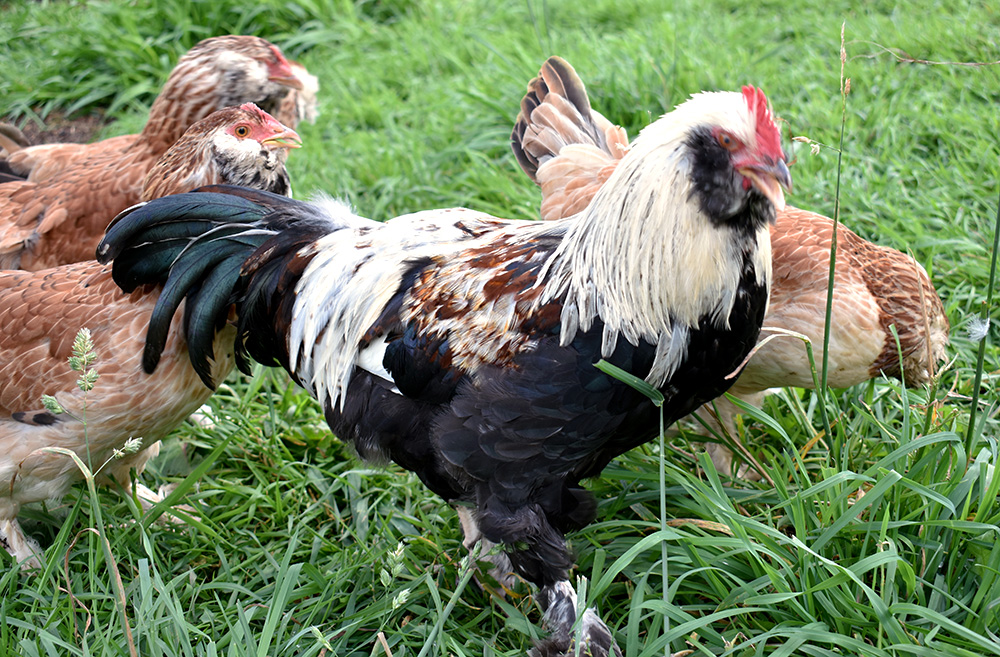
Is a Fodder System Right For You and Your Animals?
About 5 pounds of dry wheat yields approximately 25 pounds of finished fodder depending upon how clean the grain is, the temperature of your growing area, watering, etc. The animals love it! A general rule of thumb is to feed 1-2% of an animal’s body weight in fodder. So you’d feed a 500# steer between 5-10 pounds of fodder, or 1-2 trays.
It took a few days for the animals to catch on to the fact that wheat fodder is sweet and yummy, but now they wait at the fence for fodder delivery! Even the chickens like it. It’s important also, to keep plenty of hay available. Fodder isn’t meant to be fed by itself since ruminants still need hay for roughage.
The sheep crowd around and jostle for the best feeding position!
And the cattle munch it right down!
A small-scale fodder system might be a great option for your small homestead livestock including cattle, sheep, goats, rabbits, chickens, and even guinea pigs!
Other Posts You Might Enjoy:
- 15+ Ways to Save Money on Chicken Feed
- DIY Suet Cakes for Chickens
- Herbs for Chicken Nesting Boxes
- How to Feed Kelp to Livestock
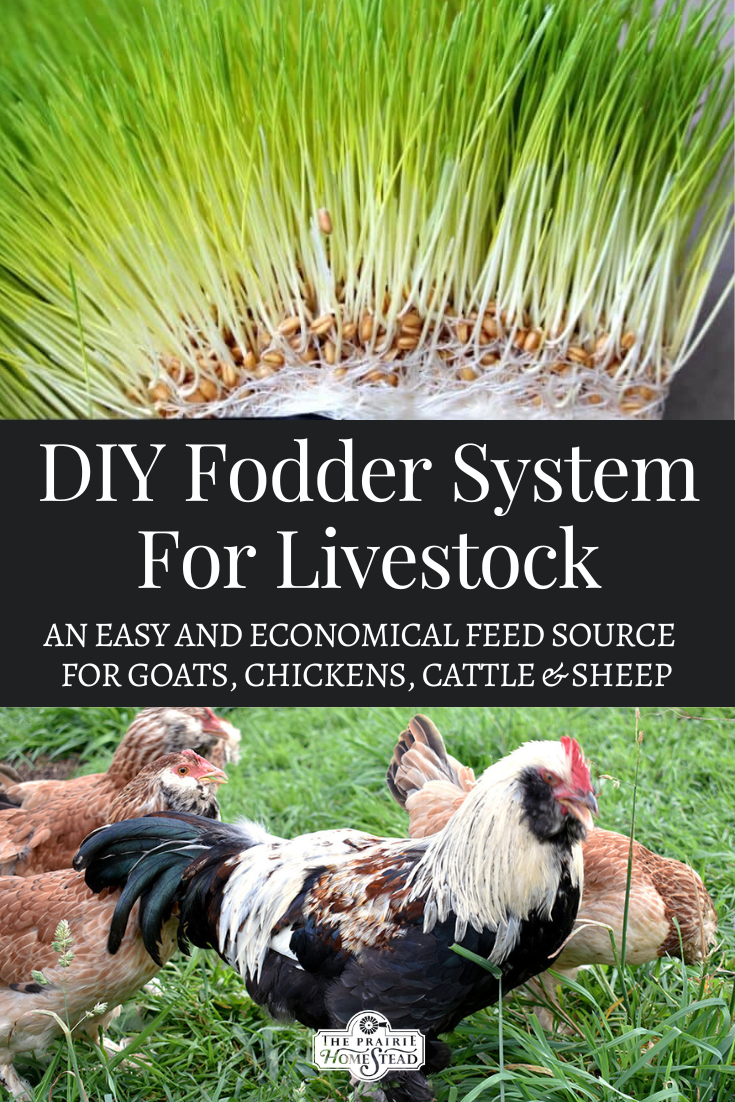
You can find Jana over at Celtic Prairie Farm, where she and her family work toward self-sufficiency by gardening, preserving food, and raising Irish Dexter cattle as well as Icelandic sheep and chickens. She also knits obsessively while binge-watching Netflix in the middle of the night. You can also follow Celtic Prairie Farm on Facebook and Instagram.
References:
http://wcroc.cfans.umn.edu/fodder
http://www.motherearthnews.com/homesteading-and-livestock/sprouted-fodder.aspx
http://blogs.cornell.edu/organicdairyinitiative/files/2014/05/Hydroponicfodder-article-11wpnm0.pdf
https://mosesorganic.org/farming/farming-topics/livestock/sprouted-barley-fodder-a-revolution-in-animal-feed/
HPH 18 tray Hydroponic Fodder System Plans and Growing Instructions (Half-Pint Homestead Plans and Instructions Series Book 4)

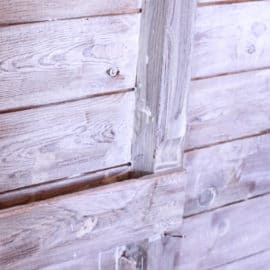
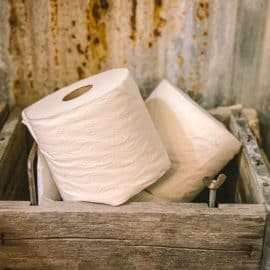
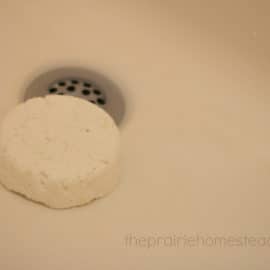
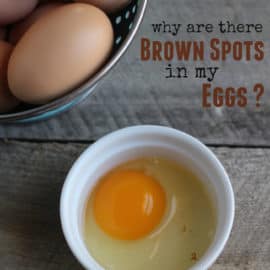
I grew up with a neighbor who did this back in the 60’s for his milk cows.
His system was quite elaborate and fun to watch and do. I remember eating some of the tasty little sprouts.
I grow barley fodder for all my animals. The horses, goats, sheep, chickens, and even my dogs love it. I cut it into 2×2 squares so it’s easier for the young horses to eat it. It’s great knowing they are getting the nutrients all year long.
I noticed no mention of horses. Is this only safe for ruminants?
Is should be OK for horses, too, I imagine!
Great…I have tried it but my cows don’t eat it.So how do you train them to get along!
My horses LOVE the Oat fodder but absolutely hate the wheat fodder and will only eat the wheat when they are really hungry… they bite off the grassy tops tho. Everything else eats any and all fodder types they can get their mouths on, especially the rabbits and chickens.
how often do you feed this?
I would think it would be fine but remember it has a lot of moisture content so they still need dry material as well
It’s wonderful for horses. That’s why I started growing
Thanks for sharing! It’s always nice to see people talking about fodder. Carey Evans – Yes, fodder is perfectly safe for horses.
– Kyle, GM of http://www.fodderworks.net.
Looks prity good have to lookinto that
This looks like it would be a great 4-H or school project for my boys. We raise Miniature Herefords and this would be great for the last month or two of winter where the cows need an extra boost as they are nearing calving and when the hay supply is low or back to first cutting hay. By March our cows are usually struggling a little and the mud just makes them lose even more conditioning. This fodder might just be the extra boost that they need.
I try to cruise through questions to keep from asking the same question over and over ..lol. so hopefully I didn’t pass one by.
Can a chicken survive in this alone?
They sill need hay ( dry material) this does not replace that
Would love to know what kind of pump/drip system she used. 🙂
We just used pvc pipe with small holes drilled into it with an end cap and a fitting on the other end of the pipe that reduces the diameter to the size of the plastic tubing. We bought this pond pump from Amazon: http://amzn.to/1nPqpkM (affiliate link)
We used the plans from Half Pint Homestead (link at the end of the post) however there are pros and cons to this design, some of which I’ve written here. You can also google reviews of her system before you build your own.
Hello. Where did you get your trays?
I ordered them from Amazon, however they haven’t held up very well to daily use. They’d be fine for potted seedlings at a nursery, since they’re just those black 10″x20″ trays. We’ll be looking for more heavy-duty alternatives at the hardware store this weekend.
I use the plastic totes from Walmart that are about 2ft x a foot I drill small holes in the low spot on one end (5-6 holes ) and the trays are on a1/4 inch angle back to front so the water runs out they are pretty heavy enough
We’ve known about fodder since before we ended up on a homestead.
It is something that is in the back of our mind. You are right, the ones you can purchase are really expensive.
I like the idea that we can feed our goats and our chickens the same stuff.
Although it can make yields higher (i.e. sprouted barley has more volume than just barley seed) is there any research to suggest it is a more nutrient dense/ superior feed? Or is this just another method of getting the most bang for your buck?
Yes, in my book, Wheatgrass Nature’s Finest Medicine, (written by Steve Meyerowitz)
barley grass is mentioned several times with research backing it’s fabulous claims.
For years I combined hard red winter wheat along with barley in growing trays intended for juicing for my own health.
I found my poultry would only eat the root and seed part and not the long green stem. Is this an issue for you?
My chickens have been a little picky about it. I’ve seen a couple of the roosters eat the whole thing, but yes, they seem to prefer the roots and seeds. They definitely don’t clean it up as well as the sheep and cows do!
It seems to me that if you feed the tops (green) to horses, and the roots and seeds to the poultry/fowl, you double the bang for your buck. And you might be able to dry some of this through the summer months to have dried fodder as a back up to the extremely picky horse/bird.
Interesting read, thank you!
Hi Jana, it was very informative and we are going to take your advice to start a new small farm with hydro phonic system
Hi Jana, it was very informative and we are going to take your advice to start a new small farm with hydro phonic system.
But you dint mentioned about the Lights required and co2 and ozone.
Ah! Love this! This is the next project! I can’t wait!
For those who grow fodder can you give me recommendations on where to get the proper seeds? (unfortunately we don’t live near an organic wheat farmer 🙁 . We live in a range/ranch area and all the Ranch/equiptment stores only carry feed that has been treated to not sprout. I have found a few seed websites but it seems pretty expensive ($17 for 1lb) unless this is normal
Check out Paramount seed farms?
If you have a walmart near you you can order red wheat berries from Walmart and sprout them. They are delicious and sprout well. I got 2- 26# containers for $18.79 each with free shipping to the store. Just picked it up there. I have more fodder than my birds will eat. I’m also sprouting black oil and striped sunflower seeds too. Birds love that too. Sometimes I mix them together with the red wheat berries after soaking them.
I know this is an old post, but maybe someone else will benefit from this info: https://hancockseed.com/barley-seed-48-lb-bag-untreated-732.html?gclid=EAIaIQobChMIlMWI9t_f2AIVFnZeCh0-0QGTEAYYASABEgKgP_D_BwE
This is GMO-free and is not treated. Great company, quality seed and efficient.
Johnnyseeds.com has organic seeds. I’ve heard good things about them but have yet to purchase anything.
Johnny’sseeds.com. They have organic. Heard a lot of good things about them, but have yet to purchase anything.
Find a local agricultural seed company near you. I have one a few miles away and I get Red Wheat, Barley, Rye, Oats and Peas all non gmo organic non coated and cleaned. they have to maintain a higher standard than people food. In fact they send their old seed that has lost some of their germination to the food companies. I pay around $20 for 50 pound bags. Organic feed at the feed store is around $30 for 50 pounds.
Hope this helps
Hi Jana! Thank you for sharing this homemade fodder system post. In my childhood, I have worked lots of time with my father in our own firm. But there was no organize way to create nutritious fodder for animals. Now I have to try to make barley, oats, wheat, or even sunflower seeds for my firm animals.
Unfortunately, there is no good scientific or economic reason to justify fodder systems except in a few rare cases where reasonable quality hay is not available. Many AG universities have tested the systems and have found that nutrition is not significantly improved vs simply eating the dry seeds. The seeds use up carbohydrates to support the growth of the of the sprout in the first 7 days. That means there is less nutrition available to the livestock. In a field, using the energy of the sun, the sprout would eventually convert carbon from the air into more fodder. But in the fodder systems, that doesn’t happen.
You do get more volume/weight of feed simply from adding the water which was absorbed by the seedlings. But that doesn’t make more food on a dry matter basis or something that is better nutritionally for the livestock.
The fodder systems take labor time, investment, and the continuous purchase of seed. So scientific experiments have shown that it doesn’t create more or better feed, costs you time and money, and does not make you more self sufficient on your homestead.
I was very enthusiastic about fodder systems until I studied them carefully. Discussion of these systems usually gets fairly heated in homesteading forums. I suggest you go to your state AG school and search for fodder systems and see what their test results show.
Fresh greens just seems more healthy and common sense over grains!
I agree. It seems like it should be better. Scientific experiments have shown it is somewhat better quality feed, especially for horses and humans (monogastrics). However, the costs of the system are high and you end up creating LESS food in terms of dry matter and total digestible nutrients.
Here’s a link to a Aussie study: http://blogs.cornell.edu/organicdairyinitiative/files/2014/05/Hydroponicfodder-article-11wpnm0.pdf
from the report exec summary
“Profitable use of sprouting grain as a feed source for commercial cattle production appears
unlikely. Although hydroponically sprouted grain is a highly nutritious feed, it has major limitations
for profitable use in commercial cattle operations, including its high cost of production (cost of
capital, depreciation, labour, running costs), scale of operation, handling of very high moisture
feed and risk of mould.
Mould is a common problem that increases labour and costs, reduces animal performance and
sometimes results in stock deaths.
A problem that people may have in evaluating the cost of sprouts is failing to account for its high
moisture content, labour input and capital costs. Therefore many people think it is much cheaper
than it really is. It is best to evaluate supplements on a dry matter basis and examples are given in
this report. Sprouts have been found to cost from two to five times the cost of dry matter
compared with the original grain. Ultimately, it is the performance relative to the cost that
determines profitability.
There are many unsubstantiated claims of exceptional live weight performance due to hydroponic
sprouts. Tudor et al. (2003) recorded higher than expected performance over 48 days and
concluded that further rigorous research was required. The performance potential of sprouts as a
supplement to dry pasture remains largely unknown.
Hydroponic sprouts may have profitable application in intensive, small-scale livestock situations
with high value outputs, where land and alternative feed costs are high, and where the quality
changes (eg less starch, more lysine, vitamins, etc) due to sprouting are advantageous to the
particular livestock. Such quality improvements may be more applicable to horses and humans
than to commercial cattle. Sprouted legumes have been used to prevent scurvy in humans (Leitch
1939). For horses, sprouts provide high energy and protein, low starch, no dust and a useful
supplement of vitamin E and biotin (Cuddeford 1989). Ruminants synthesise many of their own
vitamins in the rumen. Cattle are also less efficient at using high quality feeds than horses or
monogastrics such as pigs and people. “
when accounting for total costs of the system, sprouts are 3 – 5 times more expensive than simply feeding the seed. But of course, if this is simply something that someone enjoys doing and they have free time, it can be a fun way to give your animals a treat they will enjoy.
from an Iowa State 2013 study –
Due to changes in the nutritive characteristics of the
fodder (less starch, more sugars, vitamins and lysine)
monogastrics such as people, horses, swine and poultry may have more benefit. In the end analysis, it us ultimately
animal performance relative to the alternative costs that
determines profitability and usefulness. With a cost 3 to 5
times that of the original barley grain or other readily
available feed sources, increased animal performance of
that magnitude is highly unlikely, but more research
seems necessary.
Gee, I grew fodder for my hens (Giant Red Mangle beets) just to get them out of their boredom in winter; from eating the same ‘ole thing.
Good article, thanks for the useful topics you post!
I found a simple way to start an outdoor fodder system with buckets, no pump.
http://brinkoffreedom.net/homesteading/dead-simple-fodder-system/
His method is cheap and easy way to start out. I’d suggest watering with rain water and add plastic screen over the bucket tops to avoid bugs and birds.
I enjoy your information and may try the fodder system. we live in Michigan. it was 51 degrees and raining early this afternoon. it is now 31 degrees with a wind chill of 7 degrees. I think we are back into winter, and, fodder may be needed. keep up the good work.
Can this system be grown outside?( Phoenix Arizona. )What light requirements does it have?
Can you mix grains/sunflower seeds together?
Thanks!
If you do this inside how do you take care of all the water not going all over the place and how do you keep it from freezing?
Some people use a tiny amount of bleach when they soak the grain, I suppose to kill any mold/fungus spores. Would ACV do the same thing?
Awesome set up! With all the snow we’ve had this winter the chickens really appreciate any greens.
I use a 4 tray system and a simple pump in my greenhouse. Since I heat the greenhouse in the winter, to winter-over my sensitive plants, there is not a significant additional electrical cost. Horses and Chickens love it and eat every sprout I put out. I supplement with dry alfalfa to help with digestion. I like it because it reduces the amount of heavy alfalfa bales I have to store and move around and appears to save about 50% in cost, but that is probably because grain cost are fairly cheep in Central Oregon. My girls (horses) get about 45 pounds of fodder a morning and they come running when I put it out. Only takes me about 30 minutes to process, clean and reseed my system daily. I’ve learned to control mold with a little bleach in return water, and cleaning trays each day with a little more bleach. I use heavy duty ‘sprouting trays’ that I found on the internet, they hold up very well.
I didn’t see any mention of a light or grow light. Is one needed to grow fodder ???
Is there a difference between grains for feed and grains for seed? If so which should I be using?
We have used fodder for our pigs and sprouts for our chickens for years. My set up is simply a pvc shelving unit and I grow fodder in black trays or sprouts in small plastic storage totes. A large tote under the unit catches the run off. No grow lites are necessary. My system sits in front of a window. I water twice a day, am and pm with a hose attached to my sink. I feed 100+ chickens these sprouts daily and it takes less than 20 min. total, am and pm to do the chores. The trays that I grow for the pigs are full fodder in 7 days. Growing sprouts and fodder has been extremely economical for us. The animals grow and produce exceptionally well.
That’s awesome! Sounds like you have a great set up going!